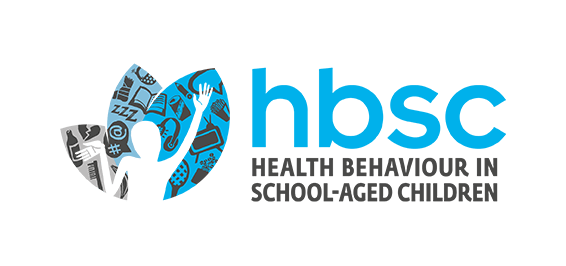A focus on adolescent physical activity, eating behaviours, weight status and body image in Europe, central Asia and Canada
Health Behaviour in School-aged Children international report from the 2021/2022 survey: Volume 4
Abstract: The Health Behaviour in School-aged Children (HBSC) study is a large school-based survey carried out every four years in collaboration with the WHO Regional Office for Europe. HBSC data are used at national/regional and international levels to gain new insights into adolescent health and well-being, understand the social determinants of health and inform policy and practice to improve young people’s lives. The 2021/2022 HBSC survey data are accompanied by a series of volumes that summarize the key findings around specific health topics. This report, Volume 4 in the series, focuses on adolescents’ physical activity, eating behaviours, weight status and body image, using the unique HBSC evidence on adolescents aged 11, 13 and 15 years across 44 countries and regions in Europe, central Asia and Canada. It examines the status of moderate- to-vigorous and vigorous physical activity, physical inactivity, food and drink consumption, over- and underweight and body image among adolescents, explores the role of gender, age and social inequality and identifies how these adolescent behaviours have changed over time. Findings from the 2021/2022 HBSC survey provide an important evidence benchmark for current research, intervention and policy-planning.
Topic: HBSC survey results, substance use questions in the Mandatory Questionnaire
HBSC data: 2017/18 and 2021/22 international file
Languages: English
ISBN: 978-92-890-6105-6 (PDF)
Editors: Jelena Gudelj Rakić, Zdenek Hamrik, Anna Dzielska, Rosemarie Felder-Puig, Leila Oja, Peter Bakalár, Paola Nardone, Silvia Ciardullo, Shynar Abdrakhmanova, Assel Adayeva, Colette Kelly, Anne-Siri Fismen, Mary Wilson, Judith Brown, Joanna Inchley and Kwok Ng
Suggested citation: Rakić JG, Hamrik Z, Dzielska A, Felder-Puig R, Oja L, Bakalár P et al. A focus on adolescent physical activity, eating behaviours, weight status and body image in Europe, central Asia and Canada. Health Behaviour in School-aged Children international report from the 2021/2022 survey. Volume 4. Copenhagen: WHO Regional Office for Europe; 2024. Licence: CC BY-NC-SA 3.0 IGO.
From X (Twitter)
🍏 An apple a day? Sadly, less than 40% of adolescents eat fruit daily. Let's make #healthyeating a priority for our youth!
— WHO/Europe (@WHO_Europe) May 23, 2024
Discover more: https://t.co/m2GIDsr24s #AdolescentHealth #diets pic.twitter.com/OIUONzzAAk
📢 New data reveal adolescent health trends in Europe and beyond! Explore our latest report on physical activity, nutrition, body image, and more. Download now at https://t.co/m2GIDsr24s #AdolescentHealth @HBSCStudy pic.twitter.com/RVfwpze3cA
— WHO/Europe (@WHO_Europe) May 23, 2024
Over 1 in 5 adolescents (22%) are overweight or obese, up slightly from 2018, with higher rates among boys (27%) than girls (17%).
— WHO/Europe (@WHO_Europe) May 23, 2024
Let's act NOW to reverse this trend and safeguard the health of future generations. #AdolescentHealth https://t.co/m2GIDsr24s pic.twitter.com/UR3Sxcw7HR
🍎🥦 Stronger school nutrition laws can make a big difference in adolescent health. Let's advocate for policies that prioritise nutritious foods in schools. https://t.co/LhnkXOTbKD #AdolescentHealth #diets pic.twitter.com/cvp7lcrYA6
— WHO/Europe (@WHO_Europe) May 24, 2024
Physical activity decreases with age: 24% at 11 years, 19% at 13 years, and 16% at 15 years get 60 minutes of MVPA daily.
— WHO/Europe (@WHO_Europe) May 23, 2024
We need targeted interventions to keep teens #active! https://t.co/m2GIDsr24s! #AdolescentHealth pic.twitter.com/fZhvy8yGv1
🏃♂️ Only 25% of boys and 15% of girls achieve 60 minutes of moderate-to-vigorous physical activity (MVPA) daily. This declines with age and is lower among less affluent families.
— WHO/Europe (@WHO_Europe) May 24, 2024
Read more at https://t.co/LhnkXOTbKD#AdolescentHealth pic.twitter.com/jmqmAhsiqn
🚫 Taxing sugary drinks and junk food can discourage consumption and help fund #health initiatives.
— WHO/Europe (@WHO_Europe) May 23, 2024
Let's advocate for policies that prioritise adolescent well-being and help countries reach #SDGs.https://t.co/LhnkXOTbKD#AdolescentHealth #R2F pic.twitter.com/ChuYcYbfp9
24% of adolescents are highly inactive, engaging in physical activity on two or fewer days per week, with higher inactivity rates among girls (29%) compared to boys (20%).
— WHO/Europe (@WHO_Europe) May 24, 2024
We must promote more #active lifestyles. #AdolescentHealth https://t.co/m2GIDsr24s pic.twitter.com/1Wm5FWom8N
⚖️ Adolescents from less affluent families are more likely to be overweight/obese (27%) compared to more affluent peers (18%).
— WHO/Europe (@WHO_Europe) May 23, 2024
We need policies that ensure nutritious food is affordable and accessible to all young people. #AdolescentHealth https://t.co/LhnkXOTbKD pic.twitter.com/nw71HkGFfb
🍫 25% of adolescents consume sweets daily, with higher rates among girls.
— WHO/Europe (@WHO_Europe) May 23, 2024
All children should have access to nutritious snacks that fuel their well-being.
Read more: https://t.co/LhnkXOTbKD#AdolescentHealth #diets pic.twitter.com/l5YHg6dv5R
Young people across the @WHO_Europe Region are leading increasingly unhealthy lifestyles - compromised by poor diets and a lack of physical activity.
— Hans Kluge (@hans_kluge) May 24, 2024
The consequences across their lifetimes could be devastating.
Our new @HBSCStudy report has the story:https://t.co/MqOgShqGOA
Related reports
A focus on adolescent substance use in Europe, central Asian and Canada
HEALTH BEHAVIOUR IN SCHOOL-AGED CHILDREN INTERNATIONAL REPORT FROM THE 2021/2022 SURVEY: VOLUME 3
A FOCUS ON ADOLESCENT PEER VIOLENCE AND BULLYING IN EUROPE, CENTRAL ASIA AND CANADA
HEALTH BEHAVIOUR IN SCHOOL-AGED CHILDREN INTERNATIONAL REPORT FROM THE 2021/2022 SURVEY: VOLUME 2
A focus on adolescent mental health and well-being in Europe, central Asia and Canada
HEALTH BEHAVIOUR IN SCHOOL-AGED CHILDREN INTERNATIONAL REPORT FORM THE 2021/2022 SURVEY: VOLUME 1




